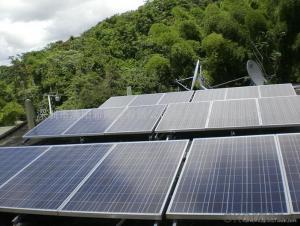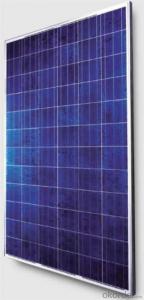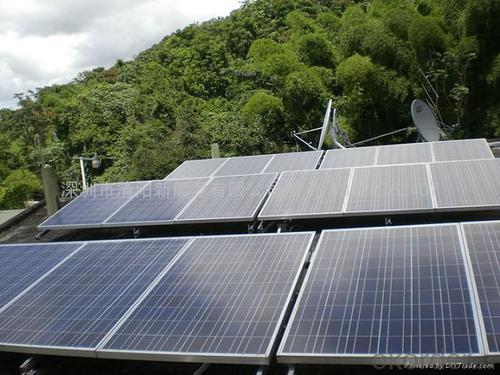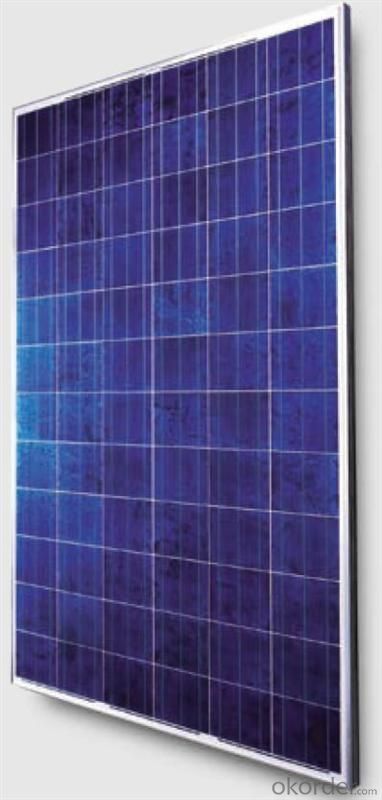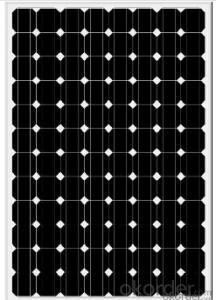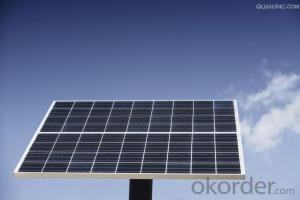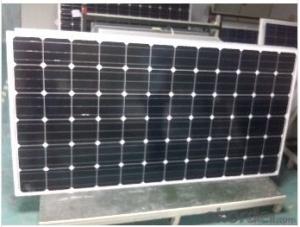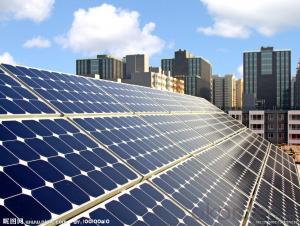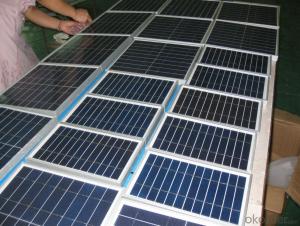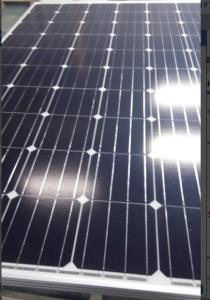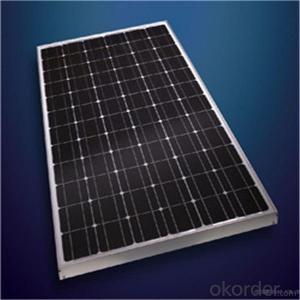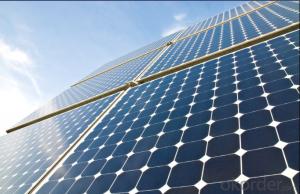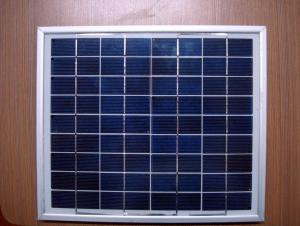CNBM Roof Crystalline Solar Panels for Pakistan Export
- Loading Port:
- Shanghai
- Payment Terms:
- TT OR LC
- Min Order Qty:
- 78000 watt
- Supply Capability:
- 10000000 watt/month
OKorder Service Pledge
OKorder Financial Service
You Might Also Like
CNBM Crystalline Solar Panels Exported to Pakistan
Specifications:
solar panels from 5W--300W, made of TAIWAN MOTECH brand cells,with CO in TAIWAN,Mono and Poly with VDE,IEC,CSA,UL,CE,ISO.
We import solar cells from Taiwan Motech brand, with this CO in taiwan and our CSA certification,we can still sell goods to Anti-dumping areas like USA. Our main products are solar panels, off grid and on grid solar home systems , solar street lighting systems, solar water heating system,solar pump,solar attic fan, solar DC LED lights and solar DC refrigerators.
Certificates : ISO, CE, VDE IEC, MCS, CSA-UL, CEC.
Delivery time: sample 10days, order 25-30days.
Sample: charged.
Payment term: T/T 30% as deposit, 70% before shipment. Or irrevocable L/C at sight.
Trade term: FOB Shenzhen or CIF destination seaport or Airport.
Characteristics:
I.Solar Cell : High efficiency crystalline solar cell. Even if under the weak light, the solar module can produce maximum power output.
II.Tempered glass (toughened glass): Anti-reflecting coating and high transmission rate glass increase the power output and mechanical strength of solar module.
III.EVA and TPT: Using high quality EVA and TPT to prevent destroying and water.
IV.AI frame: Without screw, corner connection. 6 holes on the frame can be installed easily.
V.Junction box: Multi function junction box with water proof.
VI.Long lifetime: ≥25 years; Less power decrease.
VII.Good performance of preventing from atrocious weather such as wind and hails.
VIII.Resisting moisture and etching effectively, not effected by geology.
IX.The certificate issued by international authority: UL, TUV, IEC, VDE, CE.
Quality and Safety
1. Rigorous quality control meets the highest international standards.
2. High-transmissivity low-iron tempered glass, strong aluminium frame.
3. Using UV-resistant silicon.
4. IS09001/14001/CE/TUV/UL
Warranties
1. 10 years limited product warranty
2. 15 years at 90% of the minimal rated power output
3. 25 years at 80% of the minimal rated power output
Technical date :
ITEM NO.: | Poly 156*156 cell ,60pcs . Power range from 230Wp-260Wp | ||||||
Maximum Power(W) | 230 | 235 | 240 | 245 | 250 | 255 | 260 |
Optimum Power Voltage(Vmp) | 29.4 | 29.5 | 29.7 | 30.1 | 30.3 | 30.5 | 30.7 |
Optimum Operatige Current(Imp) | 7.83 | 7.97 | 8.08 | 8.14 | 8.25 | 8.37 | 8.48 |
Open Circuit Voltage(Voc) | 36.7 | 36.8 | 36.9 | 37.1 | 37.3 | 37.5 | 37.7 |
Short Circuit Current(Isc) | 8.52 | 8.59 | 8.62 | 8.65 | 8.69 | 8.73 | 8.78 |
Solar Cell: | 156*156 Poly | ||||||
Number of Cell(pcs) | 6*10 | ||||||
Name of Solar Cells | Polycrystalline Cell | ||||||
Size of Module(mm) | 1650*992*40/45/50 | ||||||
Cable & Connector Type | Pass the TUV Certificate | ||||||
Frame(Material Corners,etc.) | Aluminium-alloy | ||||||
Back sheet | TPT | ||||||
Weight Per Piece(KG) | 19.5KG | ||||||
FF (%) | 70-76% | ||||||
Junction Box Type | Pass the TUV Certificate | ||||||
Tolerance Wattage(e.g.+/-5%) | ±3%, or 0-3% | ||||||
Front Glass Thickness(mm) | 3.2 | ||||||
Temperature Coefficients of Isc(%) | +0.04 | ||||||
Temperature Coefficients of Voc(%) | -0.38 | ||||||
Temperature Coefficients of Pm(%) | -0.47 | ||||||
Temperature Coefficients of Im(%) | +0.04 | ||||||
Temperature Coefficients of Vm(%) | -0.38 | ||||||
Temperature Range | -40°C to +85°C | ||||||
Surface Maximum Load Capacity | 5400Pa | ||||||
Allowable Hail Load | 23m/s ,7.53g | ||||||
Bypass Diode Rating(A) | 12 | ||||||
Warranty | 90% of 10 years, 80% of 25 years. | ||||||
Standard Test Conditions | AM1.5 1000W/ 25 +/-2°C | ||||||
Packing | carton or pallet | ||||||
1*20' | 14 Pallets / 316pcs | ||||||
1*40'STD | 25 Pallets / 700pcs | ||||||
FAQ:
Solar panel refers either to a photovoltaic (PV) module, a solar hot water panel, or to a set of solar photovoltaic modules electrically connected and mounted on a supporting structure. A PV module is a packaged, connected assembly of solar cells. Solar panels can be used as a component of a larger photovoltaic system to generate and supply electricity in commercial and residential applications. Each module is rated by its DC output power under standard test conditions, and typically ranges from 100 to 320 watts. The efficiency of a module determines the area of a module given the same rated output – an 8% efficient 230 watt module will have twice the area of a 16% efficient 230 watt module. There are a few solar panels available that are exceeding 19% efficiency. A single solar module can produce only a limited amount of power; most installations contain multiple modules. A photovoltaic system typically includes a panel or an array of solar modules, an inverter, and sometimes a battery and/or solar tracker and interconnection wiring.
I..Will you focus on the safety of the goods during transportation?
Yes, Safety of the cargo is the primary element that we would consider on transportation.
II..How would guarantee the quality will meet the requirements of your clients?
Before shipment, we will have inspection for each batch of goods.
III..What certificates do you have?
IEC,UL,TUV,CSA,etc.
IV..Can you do OEM according to clients’ requirements?
Yes, we have our own brand while we can provide OEM service.
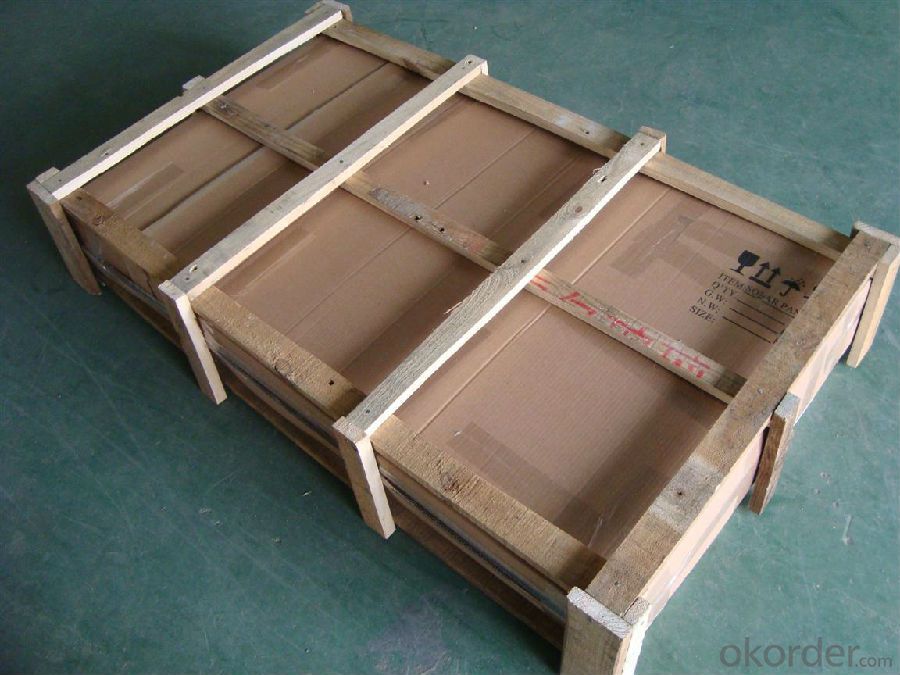
- Q: Any recommendation for best solar panels?
- If you are looking for the best solar panels, you should know that there are a variety of top manufacturers such as SunPower who make these panels. When shopping for solar panels there are a variety of choices you will need to make including what kind of panels you prefer. There are two main types of solar panels, traditional PV panels and thin film panels. GE solar panels are an ideal choice for residential, commercial or even industrial customers who want to harness the power of the sun. Hope the recommendation is good.
- Q: I need to power a series of meraki wireless repeaters that plug into a standerd wall outlet. consuming 5v or .08 amps However I need this in a remote location (like out in the middle of nowhere) Using A solar panel as power supply and a battery to store the energy but, how and what do I use to convert the energy coming from the solar panel to the battery and the batteries power supply to match the needs of the meraki wireless repeater? How do I make this as compact as possible? Do I need a ac/dc converter? or dc/ac converter? Any suggestions or solutions would be great !
- First things first. 5 Volts @ .08 amps would be .2 Watts. therefore you would need at least the same amount from a solar panel to replenish the batteries. But what puzzles me is the notion that plugging it in a wall outlet ? If you use 20 V @ 0.08 then the power consumption is 9.6 Watts And what is a meraki wireless repeater? I never heard of one. I'm a FCC licensed Ham and have some idea what is available. If you need 5 volts DC, you could use twelve Ni-cads in series and just keep them trickle charged with the solar panel That would make it compact. If you were to use an automotive battery (or motorcycle), then you would need a DC/DC converter.
- Q: I need to use solar panels to charge lead acid batteries in an off-grid application. I understand that solar panels have a open circuit maximum voltage and an maximum amperage under no resistance, and that one can optimize the power output by regulating the load (resistance). If so, is just connecting 2 -volt solar panels to a lead-acid battery inefficient? Are there devices that will maximize 2 volt output power (by varying the resistance)? Am I on the right track here? Thanks for any help.
- The answer is actually quite complicated, but if you're planning on building just a very small system, most likely, the panel will be small and weak. In this case, connecting a panel that is 8 volts open circuit directly to a lead-acid battery is probably the most efficient way to charge. There are charge controllers that you can buy, some of which actively track the maximum power point for charging your battery. Unfortunately, those controllers might eat 5 or 0 watts, just to get you another few percent of charging efficiency. If your panel is only 50 watts in the first place, you can see that this is not a good deal. If you're getting serious panels (clue: price $500 each), then you may very well benefit from a charge controller with MPPT (max power point tracking). Lead-acid, either a flooded cell like your car battery, or AGM, are the standard for solar energy storage. Lithium ion is better in many ways, being less sensitive to temperature, state of discharge, and they are also lighter. Charging them is also more straightforward with the right circuitry. The problem is, they cost like $500 per kWh, compared with less than a tenth that price for lead-acid.
- Q: Can solar panels be used in areas with high humidity?
- Yes, solar panels can be used in areas with high humidity. While high humidity may affect the efficiency of solar panels to some extent, they can still generate electricity. The performance of solar panels in humid environments can be optimized by using materials that are resistant to moisture and by ensuring proper installation and maintenance.
- Q: This is the cenario. Your yearly energy use comes by mail and it states that the total amount of energy used your household is 7000kWh.Then you make the decision of switching to get solar panels. The question is what area should your solar panel be given that the average annual length of daylight is 2.0.
- It is not that simple. There are 3 main types of solar cells. Monocrystalline silicon is the most efficient and produces the smallest solar cells, and therefore the smallest panels. Poly-crystalline (or multi-crystalline) silicon produces the next most efficient type of cells and are a popular choice. Amorphous (or thin-film) silicon uses the least amount of silicon and also produces the least efficient solar cells. This means thin film system take up more area than the other two; an important factor to consider in relation to possible future upgrades; i.e. if you'll have enough space left to do so. The North (in the Southern hemisphere) or South (in the Northern hemisphere) facing roof collects the most energy. So this biases the roof area required. Your energy usage can be changed. Hot water (a major energy user) could be better using direct solar heating with peak demand boosting, either from mains or solar. There are other possibilities, either to reduce demand or to provide energy from other sources. Not all sunshine hours are equal. Hours around midday are far more productive than hours later in the day. This must be factored in.
- Q: Can solar panels be installed on a pergola or gazebo structure?
- Yes, solar panels can be installed on a pergola or gazebo structure. These structures provide a suitable surface for mounting solar panels and can help maximize the exposure to sunlight, ultimately increasing the energy production of the panels. It is important to ensure that the pergola or gazebo is structurally sound and properly designed to support the weight and wind load of the solar panels. Additionally, the orientation and angle of the panels should be optimized for the specific location to maximize energy generation.
- Q: Can solar panels be installed on a museum or cultural institution?
- Yes, solar panels can be installed on a museum or cultural institution. In fact, many museums and cultural institutions have embraced renewable energy and are installing solar panels to reduce their carbon footprint and energy costs. These panels can be placed on rooftops, parking lots, or even integrated into the building's architecture, providing a sustainable energy source while preserving the aesthetic appeal of the institution.
- Q: Can solar panels be used in areas with high levels of heatwaves?
- Yes, solar panels can be used in areas with high levels of heatwaves. In fact, solar panels are designed to convert sunlight into electricity, and they perform better in areas with higher levels of sunlight and heat. However, it is important to consider the impact of excessive heat on the efficiency and lifespan of solar panels. Proper installation, maintenance, and cooling measures may be required to ensure optimal performance in areas with extreme heat conditions.
- Q: trees vs solar panels who would win?
- If it was a physical battle, solar panels. It's like burning ants with a magnifying glass. Aim the solar panel at the trees and you have a forest fire.
- Q: Can solar panels be installed on a carport or parking lot?
- Yes, solar panels can be installed on a carport or parking lot. This is known as solar carport or solar parking lot systems. They provide shade for parked vehicles while generating clean and renewable energy.
Send your message to us
CNBM Roof Crystalline Solar Panels for Pakistan Export
- Loading Port:
- Shanghai
- Payment Terms:
- TT OR LC
- Min Order Qty:
- 78000 watt
- Supply Capability:
- 10000000 watt/month
OKorder Service Pledge
OKorder Financial Service
Similar products
Hot products
Hot Searches
Related keywords
